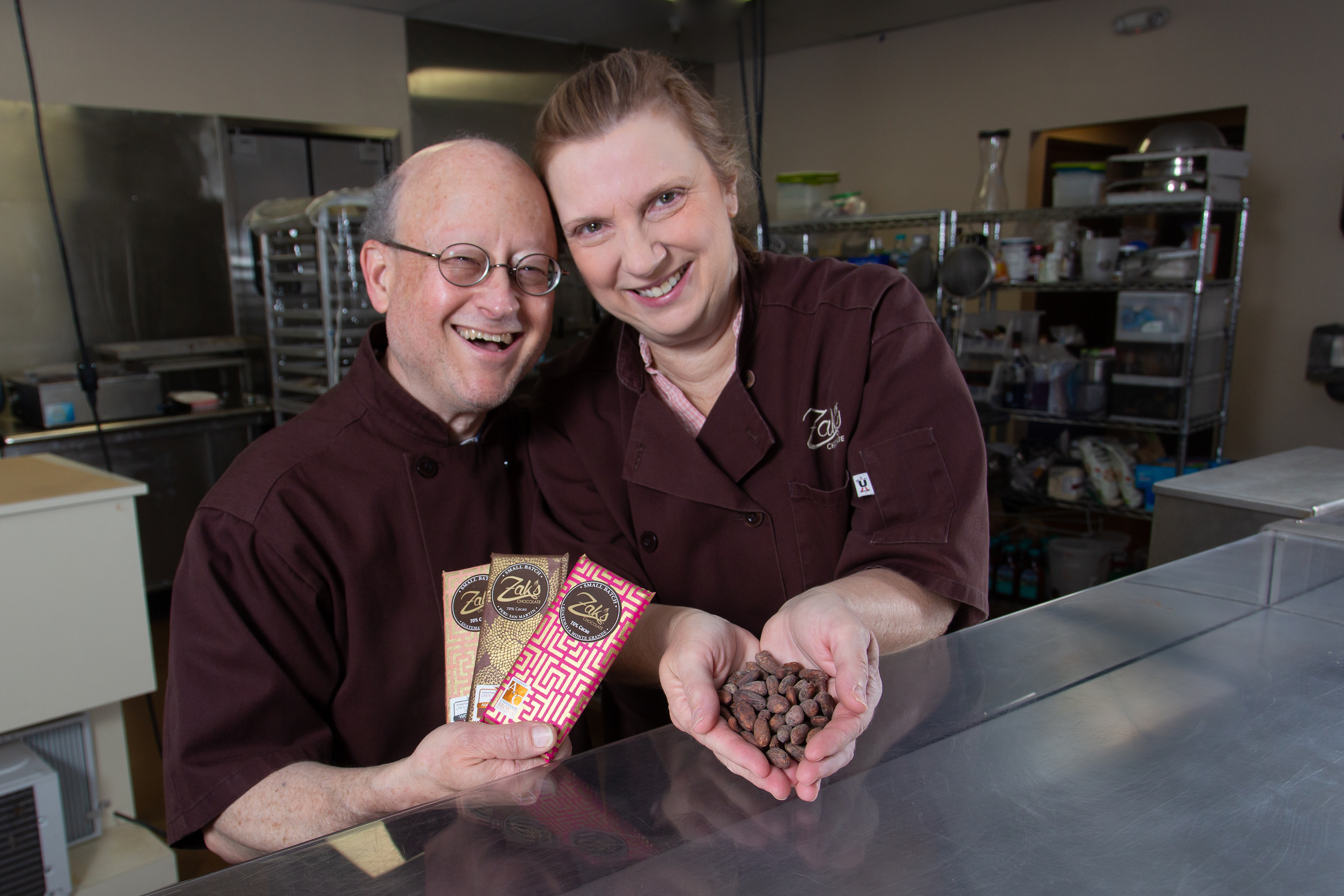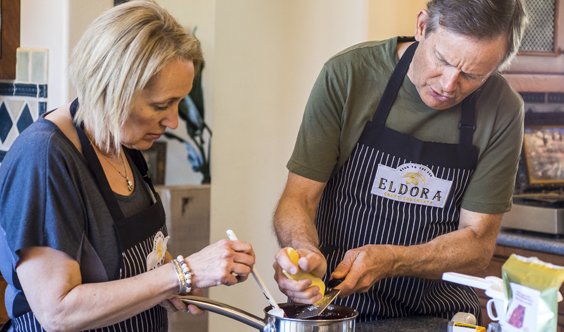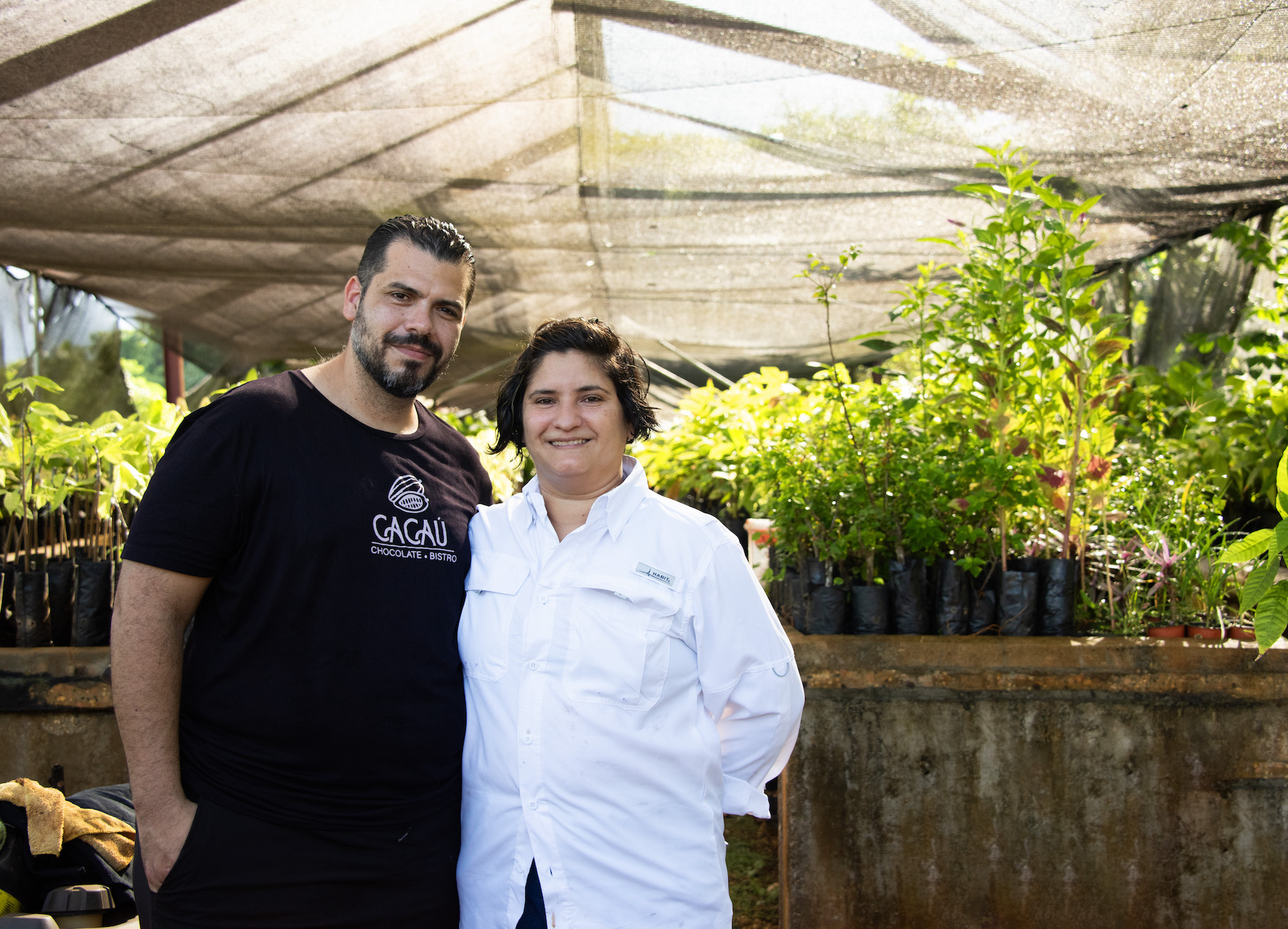Chocolate is having a moment. Sales are expected to hit record highs in 2023,
according to industry reports. Consumers are seeking out — and willing to spend
more on — quality small-batch products. While the big industrialized corporations
such as Hershey’s and Nestle still control the majority of the market, artisan
chocolates have been growing over the past five years. Today, there are about 700
craft chocolate makers in the U.S. Here are three chocolate makers whose love for
the cacao bean is the main ingredient.
ZAK’S CHOCOLATE – Scottsdale, Arizona
What started as a home-based hobby for Jim and Maureen Elitzak nearly 20 years ago has turned into an award-winning chocolate shop. Maureen, a self-taught chocolatier, would make sweet treats at home using store-bought chocolate. Finding organic chocolate proved difficult, so the couple began researching how to make their own, taking classes,
and even purchasing their own tabletop processing equipment.
“During that time, we learned more than we ever thought we could know about chocolate — where it comes from, its history, all the things that led to industrial chocolate,” Jim says. “And that got us thinking, ‘We can do this. We like it, and we think it’s pretty good stuff.’”

In 2015, the couple opened Zak’s Chocolate inside Scottsdale’s Agua Caliente Shopping Mall. They offer a selection of ethically-sourced small-batch bars, bonbons, barks, and other delights, all crafted from beans organically grown by smallholder farmers around the world.
Maureen says, “Supporting the farmers [means] making sure they’re paid a living wage, and that their kids are going to school. And we don’t buy from anyone who is doing cut and burn farming, which leads to deforestation.”
All of Zak’s 70% dark chocolates are made with three simple ingredients: cocoa bean, house-pressed cocoa butter, and organic cane sugar. Organic whole milk powder is added for milk chocolate, while white chocolate features housed-pressed cocoa butter, organic whole milk powder, and organic cane sugar. The bars are mostly plain to highlight each origin’s terroir. A few snack bars have added cactus seeds, pepitas, cacao nibs, or crystallized ginger. The bonbons, though, showcase a wide range of local flavors, from prickly pear and Arizona honey to ganache made with regional craft beers.
Since its opening, Zak’s Chocolate has garnered worldwide acclaim, winning multiple International Chocolate Awards and being named one of the best chocolate shops in America by Food & Wine magazine.
ELDORA CRAFT CHOCOLATE – Albuquerque, New Mexico
Like the Elitzaks, Steve Prickett began making chocolate as a hobby. “I’ve been a dark chocolate eater my entire life,” he says. “Then about eight years ago, my wife set us up on a tour of a facility in Hawaii. That started me on a journey to want to make chocolate.”

At the time, Prickett was working as a private wealth advisor for Merrill Lynch. When he retired in 2016, he decided to turn his hobby into a business. In 2018, he opened Eldora Craft Chocolate in Albuquerque’s Northeast Valley — the state’s first bean-to-bar chocolate shop.
Today, not only have Eldora’s truffles and 70% dark bars become a favorite of chocoholics across the country, the tiny shop is a popular tourist destination.
The homey storefront was designed by Prickett’s wife, Andrea, an interior designer. Glass cases are filled with delicate truffles wrapped in brightly colored foil, filled with classic flavors like caramel, peanut butter, and cookie dough. Locally inspired tastes include blood orange and green chile biscochito (New Mexico’s state cookie). A selection of single-origin bars showcases the distinct terroirs of places like Uganda, Belize, and Madagascar.
A one-hour tour, available for $12 per person, takes guests into the store’s industrial kitchen, where they can view each step of the production process, from roasting and grinding the beans to pouring the melted chocolate into molds, before sitting down for a guided tasting of three single-original chocolates.
SEMILA FARM & CACAÚ CHOCOLATE BISTRO – Aricebo, Puerto Rico
When Abel Vélez and his wife, Decenia Vega, began growing cacao plants at their home in their small coastal town about an hour east of San Juan, things didn’t go exactly as planned. “We started with 3,000 cacao plants, and all of them died,” Vélez says.

The couple learned from their failed experiment and developed an agriculture business that grows cacao trees. They make their own chocolates under the Cacao 360 brand and incorporate the confection into Puerto Rican cuisine.
Now, they run Semila Farm, a 43-acre farm and nature reserve. In a large greenhouse, Vega takes stock root that is resistant to diseases and grafts it to highly productive, high-yield cacao plants, resulting in trees that will produce cacao within a single year. Banana and papaya plants provide shade for saplings and deter pests. The cacao plants are then sold to other farms across the island.
“The whole idea is that by creating a production, we optimize the opportunity of participating in a specialty niche called Cacao Fino de Aroma,” Vélez explains. This high-quality cocoa, which has a high cacao content, is renowned for its fruity, flowery and nutty malt notes. “The genetics of the product have been chosen by experts from the 50 best cacaos in the world,” Vega adds. Puerto Rico and Hawaii are the only regions in America to produce it.
In addition to the farm, the couple own and operate Cacaú Chocolate Bistro. The small restaurant in downtown Aricebo features a chocolate-forward menu. Almost every dish features the confection. Vélez is the chef.
“Using chocolate in food has been culturally done for a long time,” he says. “I see chocolate as an ingredient that has the power to create a whole new experience.”
Read more Savor articles from Green Living.






